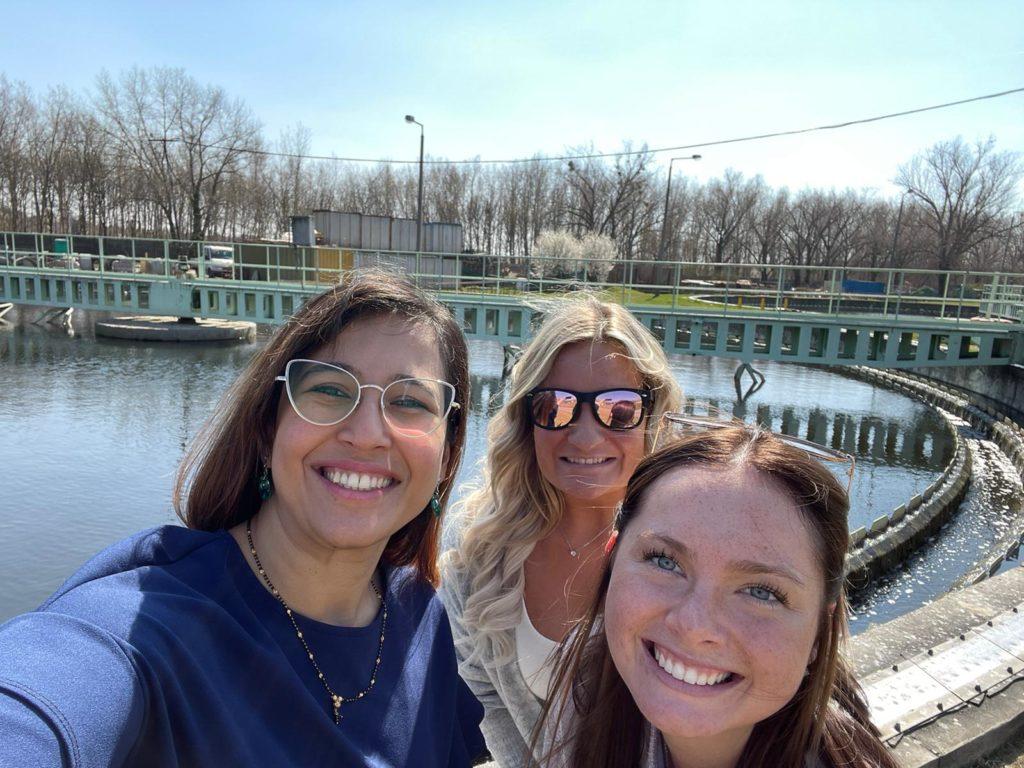Written By: Kaitlin Delke & Remmie Monahan
We visited our first wastewater treatment plant while at our corporate headquarters in Budapest, Hungary. While we had our fair share of great meals, games, and laughs, many of us also got to visit our first wastewater treatment plant! We collected some quotes from the first-timers at Transcend to share their impressions.
First, the obvious – some if it was a bit smelly inside. But once we got past that, it was interesting to see firsthand the process of how wastewater gets treated… after all, the general public rarely thinks about what happens after flushing the toilet.
We also know that it’s a topic you never hear anyone talking about. While population expansion occurs around the world, building treatment facilities & implementing improvements inside of existing plants is vital to ensuring sanitation for all. And on the drinking water side, people rarely think about the quality of water in their homes, and whether it is adequately treated. In many countries, it’s more of an expectation, and this trip helped us recognize how frequently we take it for granted.
Another thing we noticed were the apartment buildings within a stone’s throw from the plant. Population growth has been a factor weighing on both the city of Budapest and the treatment plant. It is why the facility was upgraded a handful of years ago – to adequately treat the increasing flows and loads coming into the plant. As part of the plant upgrade, the Budapest facility had many odor control installed which significantly reduced the odor for nearby neighborhoods. They use a biofilter, for example, which uses bacteria to clean and deodorize the air created in the waste receiving station and the sludge dewatering building.
Another interesting fact was how old the plant was. The infrastructure was fully operational in 1966 with additional units for sludge treatment installed in 1967. It was not until the 1980s that they started to make further upgrades to the facility to ensure they could sustainably treat the wastewater coming in from the growth in population. To think that the facility was built that long ago, and with continuous upgrades, the plant is actually one of the most modern ones in Europe in terms of its technology, its equipment, and its aesthetics. This really put into perspective how critical it is to constantly make changes and upgrades to adapt to societal needs.
“I didn’t realize that it created power.” This was another surprise for us. And not only did the plant create power, but it also generates more power than it uses. To think that the carbon content in the solid waste is transformed into energy was mind-blowing to think about. Who knew the carbon content from our waste turned into energy!?
Visiting a treatment plant like the one in South Pest was a great reminder of how important modern sanitation and treatment processes are to a healthy and beautiful city like Budapest.







